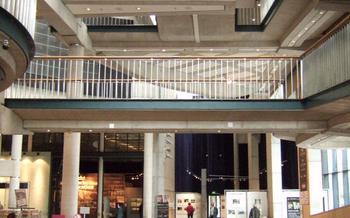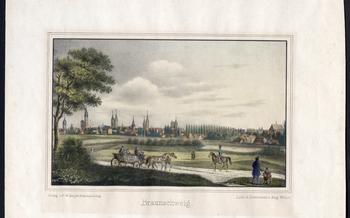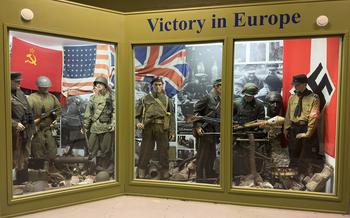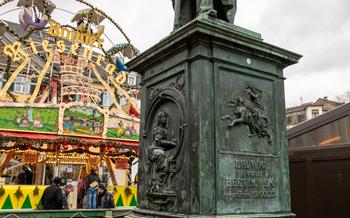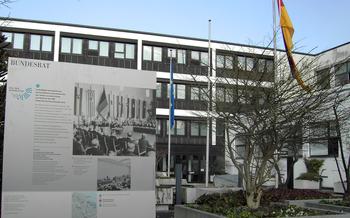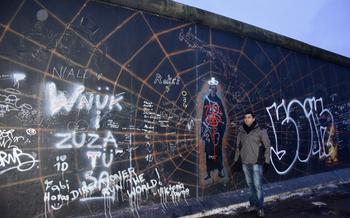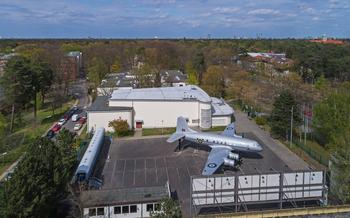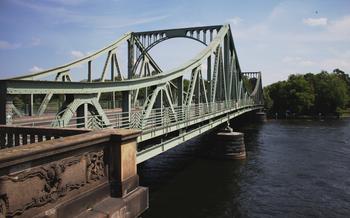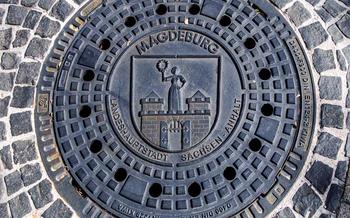
Haus der Geschichte, Bonn
- Exploring the Permanent Exhibition: "From Division to Unity"
- Temporary Exhibitions: Unveiling Hidden Stories
- Interactive Learning Experiences: Engaging All Senses
- Architecture and Design: A Modern Masterpiece
- Navigating the Museum: A Visitor's Guide
- Haus der Geschichte, Bonn: A Must-See for History Buffs
- Research and Academic Collaboration: A Center of Knowledge
- Preserving and Documenting History: A Vital Role
- Haus der Geschichte, Bonn: A Place of Remembrance and Reflection
- Insider Tip: Hidden Gems of the Museum
Exploring the Permanent Exhibition: "From Division to Unity"
The permanent exhibition at the Haus der Geschichte, Bonn, takes visitors on a journey through Germany's post-war history, from the division of the country into East and West to the fall of the Berlin Wall and the reunification of Germany. Through interactive displays, multimedia presentations, and personal accounts, the exhibition provides a comprehensive overview of this tumultuous period.
Visitors can explore the political, social, and cultural changes that took place in both East and West Germany during the Cold War era. They can learn about the impact of the division on the lives of ordinary people, the rise and fall of the Berlin Wall, and the challenges faced by Germany in the aftermath of reunification.
One of the highlights of the exhibition is the section on daily life in East and West Germany. Visitors can compare the different lifestyles, fashion trends, and cultural influences that shaped the two Germanys. They can also experience the contrasting political and economic systems that existed on either side of the Iron Curtain.
Through its engaging and informative exhibits, the permanent exhibition at the Haus der Geschichte, Bonn, offers visitors a deeper understanding of Germany's recent past and its profound impact on the country's present.
Temporary Exhibitions: Unveiling Hidden Stories
In addition to its permanent exhibition, the Haus der Geschichte, Bonn regularly presents temporary exhibitions that delve into specific historical events, figures, or cultural movements. These exhibitions offer a fresh perspective on German history, showcasing diverse narratives and highlighting lesser-known aspects of the past.
Curated by renowned historians and experts, these temporary exhibitions are often the result of collaborations with prestigious institutions and organizations. They feature thought-provoking displays, interactive installations, and multimedia presentations that engage visitors and encourage critical thinking.
Past temporary exhibitions have explored topics such as the history of German immigration, the role of women in the German Democratic Republic (GDR), and the impact of the environmental movement on German society. These exhibitions provide a platform for in-depth exploration and offer visitors the opportunity to gain new insights into Germany's rich and complex history.
Whether you are interested in the political struggles of the past, the social and cultural changes that have shaped German society, or the personal stories of individuals who have made a difference, the temporary exhibitions at the Haus der Geschichte, Bonn offer a diverse and engaging experience for visitors of all ages.
Interactive Learning Experiences: Engaging All Senses
At the Haus der Geschichte, Bonn, learning about German history is not just a passive experience; it's an immersive journey that engages all your senses. Multimedia stations and touchscreens are scattered throughout the exhibition, inviting you to delve deeper into specific topics and explore historical documents, images, and videos. Audio guides in multiple languages provide a personalized tour, narrating the stories behind the exhibits and offering insights into the complexities of German history.
For a more hands-on experience, the museum offers workshops and activities that allow you to interact with history in a tangible way. Participate in role-playing games to simulate historical decision-making, or engage in creative projects inspired by past events. These activities not only enhance your understanding of history but also foster critical thinking and historical empathy.
Educational programs tailored for students and families make the Haus der Geschichte an ideal destination for learning and exploration. School groups can book guided tours that align with their curriculum, while families can enjoy interactive workshops and activities designed to engage children of all ages. Through these programs, the museum aims to inspire young minds to become active and informed citizens, fostering a lifelong interest in history.
Architecture and Design: A Modern Masterpiece
The Haus der Geschichte, Bonn, is not just a museum of contemporary history; it is also a stunning architectural masterpiece. Designed by renowned architects, the building showcases a striking contemporary style that blends seamlessly with its surroundings. The use of glass, steel, and concrete creates an elegant and modern aesthetic, while the integration of natural light ensures a bright and airy space. The museum's design is not only visually appealing but also highly functional, facilitating easy navigation and accessibility for visitors of all abilities. Sustainable features and environmentally friendly construction methods add to the museum's overall appeal, making it a model of modern architecture and sustainable design.
Navigating the Museum: A Visitor's Guide
Exploring the Haus der Geschichte, Bonn is a breeze with its user-friendly layout and comprehensive visitor services. Clear signage and maps guide you through the museum's various sections, ensuring you don't miss any highlights. Guided tours in German and English are available for an immersive and informative experience, providing insights and anecdotes from knowledgeable guides. Audio guides in multiple languages offer a self-guided tour option, allowing you to explore at your own pace and in your preferred language. Accessibility is a priority at the museum, with features such as ramps, elevators, and wheelchair-accessible restrooms ensuring a comfortable visit for all.
Haus der Geschichte, Bonn: A Must-See for History Buffs
The Haus der Geschichte, Bonn stands as a prominent institution in Germany, renowned for its captivating exhibitions on contemporary history. Its significance extends beyond its physical presence to its role as a leading museum dedicated to preserving and presenting the nation's past. The museum's comprehensive and engaging displays offer visitors a profound journey through Germany's tumultuous history, from the post-war era to the present day.
Whether you are a history buff, a student, a researcher, or simply someone with a thirst for knowledge, the Haus der Geschichte, Bonn is a must-see destination. Its exhibitions provide a unique platform to reflect on the past, gain insights into Germany's journey, and foster a deeper understanding of the forces that have shaped the nation's identity.
The museum's commitment to preserving and documenting history makes it an invaluable resource for scholars and enthusiasts alike. Its extensive library and archives offer a wealth of information, while its oral history projects capture the personal accounts of those who lived through pivotal moments in history.
The Haus der Geschichte, Bonn serves as a place of remembrance and reflection, honoring the victims of war and persecution while promoting understanding and reconciliation. It encourages visitors to critically engage with the past, fostering a dialogue that contributes to a more inclusive and informed society.
Through its compelling exhibitions, educational programs, and research initiatives, the Haus der Geschichte, Bonn continues to play a vital role in shaping the understanding of Germany's history and its impact on the world.
Research and Academic Collaboration: A Center of Knowledge
The Haus der Geschichte, Bonn, is not just a museum; it is also a renowned center of knowledge and research. It collaborates closely with universities and research institutions to promote academic inquiry and advance the field of contemporary history. The museum's extensive library and archives are a valuable resource for researchers, providing access to a wealth of historical documents and artifacts. The museum also supports academic research projects and publications, contributing to the dissemination of knowledge and understanding of German history. Through these collaborations and initiatives, the Haus der Geschichte, Bonn, plays a vital role in preserving and enriching the historical record for future generations.
Preserving and Documenting History: A Vital Role
The Haus der Geschichte, Bonn is not just a museum; it is also a vital center for preserving and documenting German history. The museum's extensive collection includes artifacts, documents, photographs, and oral histories that provide a comprehensive record of Germany's past. The museum actively acquires and preserves historical materials to ensure that they are available for research and education. Digitization projects make the museum's collections accessible to a wider audience, including researchers, students, and the general public. Through its oral history projects, the museum captures the personal accounts of individuals who lived through significant historical events, ensuring that their stories are not forgotten. The Haus der Geschichte, Bonn plays a crucial role in preserving and documenting German history for future generations, making it a valuable resource for scholars, educators, and anyone interested in understanding Germany's past.
Haus der Geschichte, Bonn: A Place of Remembrance and Reflection
The Haus der Geschichte, Bonn, serves as a poignant reminder of the past and a place for profound reflection. It commemorates historical events and pays tribute to the victims of war and persecution. Through its exhibitions, the museum aims to promote understanding and reconciliation, encouraging visitors to critically engage with the complexities of German history. It is a space that fosters remembrance, reflection, and learning, inviting visitors to confront the past and its consequences.
Insider Tip: Hidden Gems of the Museum
For an enriched visit, be sure to explore the "History of the Federal Republic of Germany" exhibit, which showcases the nation's post-war journey through compelling artifacts. Dive into the "Everyday Life in the GDR" section to gain unique insights into the daily lives of East Germans during the Cold War era. Enhance your experience by joining a guided tour, where knowledgeable guides provide in-depth insights into the exhibits. Finally, don't miss the museum's gift shop, where you can find a variety of souvenirs, books, and publications to remember your visit and delve deeper into German history.
